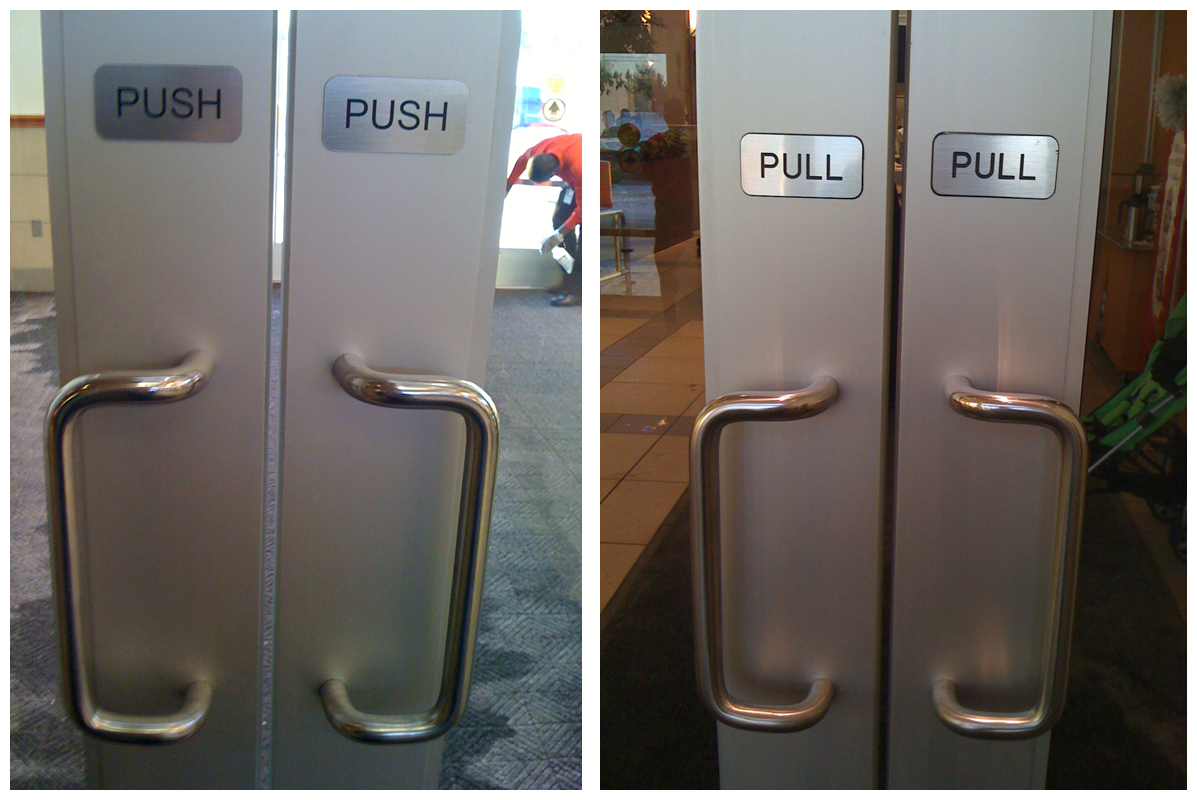When we interact with everyday objects, we have an expectation of how they are going to work. This is known in design as affordance. For example, if you see a handle on a door, it should be instinctive to you that you should be pulling on the handle; conversely, a flat rectangular piece of metal (called a finger plate) attached to the door implies it should be pushed:


